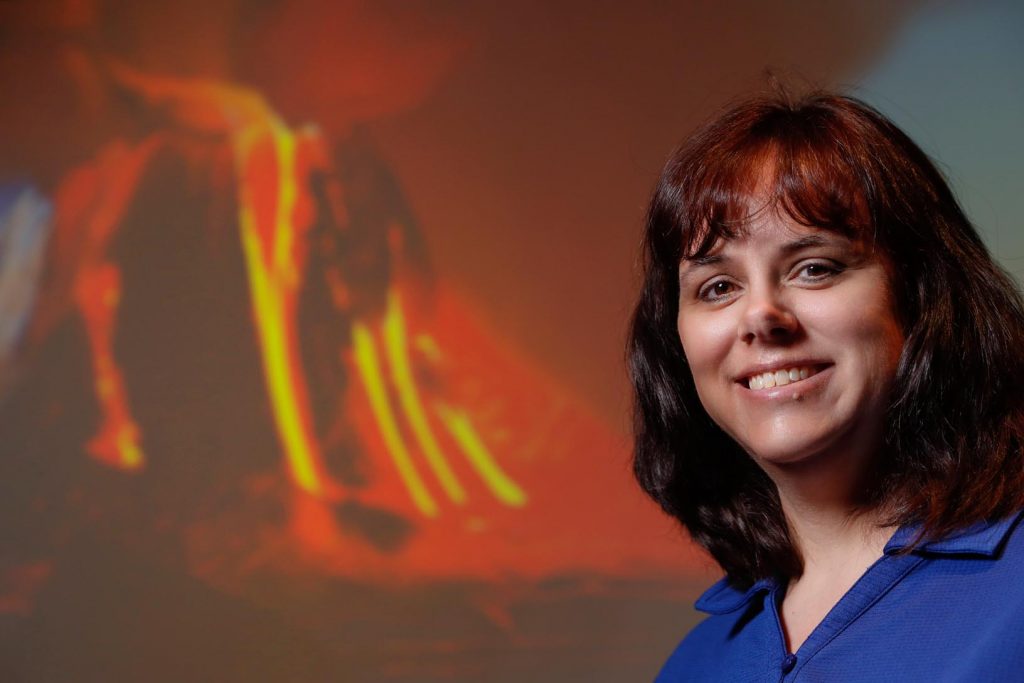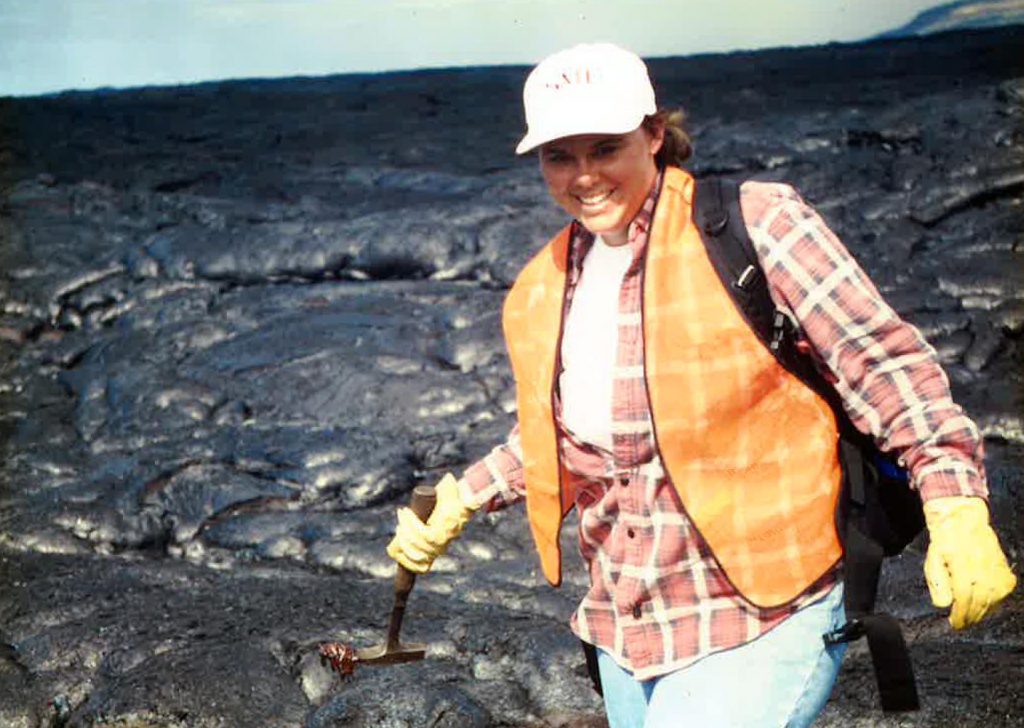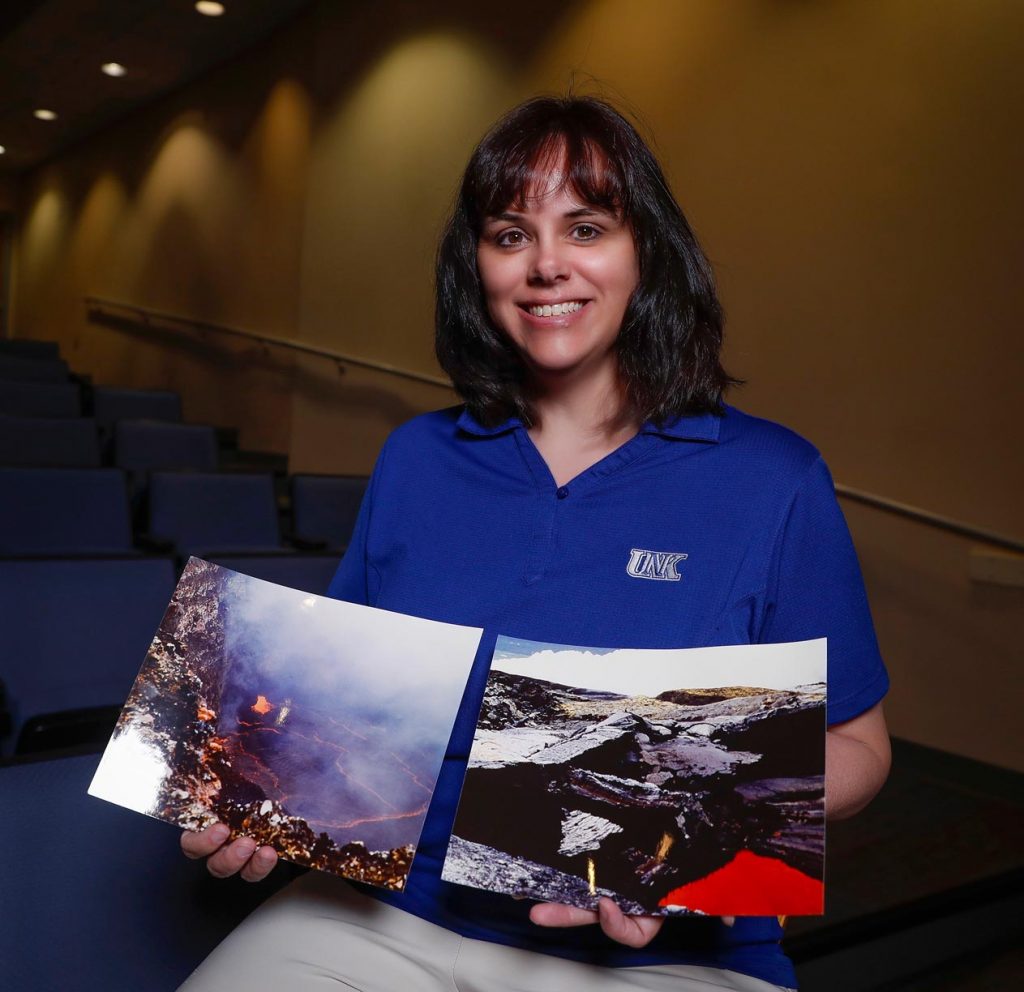
By TYLER ELLYSON
UNK Communications
KEARNEY – Beth Hinga was 8 years old when Mount St. Helens erupted on May 18, 1980.
The massive blast, which was preceded by the largest landslide in recorded history, spewed ash across a dozen states. More than 200 square miles of forest and numerous structures were leveled and 57 people lost their lives.
It was an unforgettable moment for most Americans, including a young girl living halfway across the country in Iowa.
“I was just fascinated,” said Hinga, who read about the event in newspaper clippings sent by family members. Her grandfather even brought her volcanic ash from the eruption.
“That’s really where all of this began,” she said of her attraction to volcanoes. “I just never lost that fascination.”

Hinga was so captivated she called the Cascades Volcano Observatory in Vancouver, Washington, during high school to figure out what she needed to do to study the natural wonders.
“I followed the advice and did pretty well,” said Hinga, who calls herself “a bit of a volcano tourist.”
She’s been to Mount St. Helens, the Galapagos Islands and Iceland, but her favorite volcano is the one making all the recent headlines.
The director of assessment at the University of Nebraska at Kearney has spent a lot of time getting to know Kilauea on Hawaii’s Big Island.
Hinga interned at the Hawaiian Volcano Observatory, which sits on the rim of Kilauea’s summit caldera, after graduating from Baylor University in 1993 with a degree in geology. It was a pretty good gig for a 20-something with a free summer before graduate school.
“I still have friends from that time,” said Hinga, who spent three months at the U.S. Geological Survey observatory that monitors earthquakes and six active volcanoes in Hawaii.
After earning her master’s degree from Baylor, Hinga took a full-time teaching position at Tarleton State University in Stephenville, Texas, while simultaneously working on a doctorate in seismology through Southern Methodist University in nearby Dallas.
Of course, she found a way to work volcanoes into the curriculum. Hinga led 12 different student field trips to Kilauea, the last occurring in 2011.
“It is the best place for geology,” she said.
Kilauea, the youngest and most active volcano on the Big Island, has erupted almost continuously since 1983.
In addition to the seismic and volcanic activity, there are a variety of climates in Hawaii – tropical, desert and alpine – as well as landscapes ranging from white, black and rare green sand beaches to snow near the volcano summits.
Hinga, an avid scuba diver, also used the opportunity to teach her students about marine biology and oceanography.
“It’s just a fantastic place to study science and earth science in particular,” she said.
Astronomy even made its way onto the syllabus.
“The Island of Hawai’i has some of the world’s best telescopes,” Hinga noted.
When the time came to work on the dissertation for her doctorate, which she received in 2004, Hinga knew she needed to conduct her research at Kilauea. With help from a seismologist at the observatory, she spent 18 weeks over three summers studying earthquakes and seismic activity to map faults and magma movement within the volcano.
Hinga, who hasn’t been back to Kilauea in seven years, would love to be there now to study recent changes at the volcano.
About 20 active fissures have opened on the island’s east side since May 3, with slow-moving lava forcing evacuations and destroying numerous structures.
“It’s kind of exciting that after 35 years we’ve got a new place where lava is coming to the surface,” Hinga said.
“Scientifically, it’s just really cool,” she added while acknowledging the unfortunate side effect of property loss.
Scalding-hot lava isn’t the only danger to Big Island residents. The U.S. Geological Survey on Tuesday issued a warning after explosions within the volcano crater sent an ash plume soaring 12,000 feet into the air.
The ash is a hazard for aircraft and the accompanying sulfur dioxide gas can be harmful to humans.
There is some concern that a larger steam-generated eruption could occur as the lava lake within Kilauea’s crater continues to drop, approaching the cooler groundwater below.
“That huge difference in temperature can cause these huge eruptions,” said Hinga, adding that an eruption of this kind occurred at Kilauea in 1924, hurling boulders up to 14 tons from the crater and killing one person.
Hinga, whose husband Gilbert is dean of the Division of Student Affairs at UNK, is currently writing a textbook on natural disasters.
Perhaps it will include this lesson she learned from the Kilauea volcano:
“You can’t stop nature … nature is going to do its thing.”
